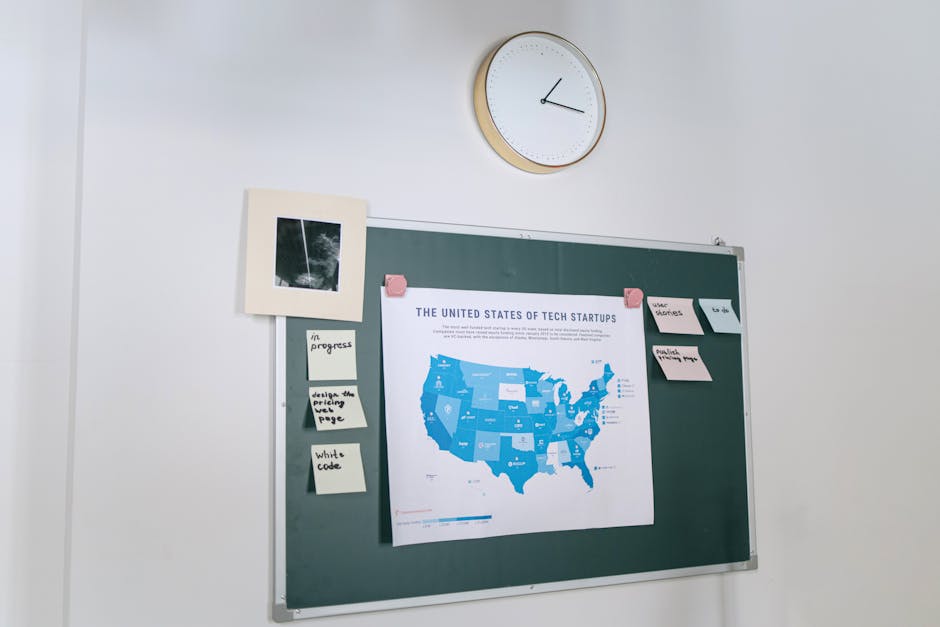13 Key Strategies for Solo SaaS Entrepreneur Triumphs
You’re about to discover the 13 key strategies that can propel your solo SaaS entrepreneurship to unprecedented success.
From identifying niche market opportunities to mastering SEO and content marketing, these strategies are essential for carving out your path in the competitive SaaS landscape.
Whether you’re just starting out or looking to take your existing venture to the next level, these insights will provide you with the tools and knowledge you need to thrive in the world of SaaS entrepreneurship.
Key Takeaways
- Thorough market research and analysis of consumer needs and behaviours is crucial for successful product development in the SaaS industry.
- Automation tools can significantly streamline processes, boost productivity, and save time for solo SaaS entrepreneurs.
- Building a strong online presence through diverse content strategies and active reputation management is essential for establishing industry leadership.
- Customer retention and referral programmes, coupled with a focus on customer satisfaction, can lead to long-term success and growth for solo SaaS entrepreneurs.
Identifying Niche Market Opportunities

To succeed in identifying niche market opportunities, you must thoroughly research and analyse specific consumer needs and behaviours. Understanding the intricacies of your target audience is crucial for pinpointing untapped markets. Market research strategies such as surveys, interviews, and data analysis can provide valuable insights into consumer preferences and pain points. By leveraging these strategies, you can uncover hidden opportunities that larger competitors may have overlooked.
When identifying untapped markets, it’s essential to adopt a proactive approach. Keep a keen eye on emerging trends and shifts in consumer behaviour. Stay agile and be willing to adapt your strategies based on new information. This flexibility allows you to capitalise on niche market opportunities as they arise.
Furthermore, engaging directly with your potential customers can yield invaluable information. Actively seek out feedback and engage in discussions to gain a deeper understanding of their needs. By actively listening to your target market, you can uncover niche opportunities that aline with their desires and aspirations. This approach not only fosters a sense of empowerment but also establishes a strong connexion with your audience.
Building a Minimum Viable Product (MVP)

When building a Minimum Viable Product (MVP), focus on creating a core set of features that address the most critical needs of your target audience. This entails conducting thorough market research to identify pain points and preferences.
Here are some key strategies to consider:
-
Product Validation: Ensure that your MVP solves a real problem for your target audience. Validate your product idea through surveys, interviews, and prototype testing to confirm that it meets a genuine need.
-
Market Research: Dive deep into your target market to understand the unique challenges and demands of your potential users. This will help you prioritise features that truly matter to your audience.
-
Iterative Development: Embrace an agile approach to MVP development. Release your product with the essential features, gather user feedback, and continuously iterate based on the insights gathered. This allows you to adapt to evolving market needs and deliver a more refined solution.
-
User Feedback: Actively seek and welcome feedback from early adopters. Their insights are invaluable for refining your MVP and shaping the direction of your product development.
Leveraging Automation Tools

You can streamline your processes and boost productivity by leveraging automation tools.
Integrating various tools can bring about significant benefits, such as seamless data flow and improved decision-making.
Time-saving automation solutions can allow you to focus on scaling your SaaS business and staying ahead of the competition.
Automation for Efficiency
By leveraging automation tools, solo SaaS entrepreneurs can streamline their processes and maximise efficiency. Automation is crucial for efficiency optimisation and freeing up time for strategic tasks.
Here are some key strategies for leveraging automation tools:
-
Automate Routine Tasks: Use automation tools to handle repetitive and time-consuming tasks, such as data entry and report generation.
-
Integrate Systems: Integrate different software and tools to automate data transfer and streamline workflows.
-
Implement Chatbots: Utilise chatbots to automate customer support, lead generation, and sales processes, allowing you to focus on more complex tasks.
-
Utilise Marketing Automation: Automate email campaigns, social media posts, and lead nurturing to engage with prospects and customers without manual intervention.
Embracing automation not only saves time but also empowers solo SaaS entrepreneurs to focus on innovation and business growth.
Tool Integration Benefits
Leveraging automation tools through tool integration provides a seamless way for solo SaaS entrepreneurs to optimise their processes and maximise efficiency. By integrating various software tools, you can streamline your workflow, saving time and effort.
This integration not only enhances productivity but also ensures data security by automating backups and encryption processes, giving you peace of mind. Additionally, integrated tools can help you enhance customer engagement by providing personalised experiences and timely responses.
With the right integration, you can automate tasks such as lead nurturing, customer support, and feedback collection, allowing you to focus on growing your business and enjoying the freedom that comes with it. Embracing tool integration empowers you to deliver exceptional value to your customers while maintaining the flexibility and independence that solo entrepreneurs cherish.
Time-saving Automation Solutions
Enhance your productivity and streamline your workflow by integrating automation tools that save time and effort. Time management is crucial for solo SaaS entrepreneurs, and process automation can be a game-changer.
Here are four time-saving automation solutions to help you reclaim your time and focus on what truly matters:
-
Automated Email Responses: Set up canned responses or email templates to quickly respond to common enquiries and minimise time spent on repetitive tasks.
-
Social Media Scheduling Tools: Use platforms like Hootsuite or Buffer to schedule posts in advance, ensuring a consistent online presence without the need for daily manual updates.
-
Task Management Software: Utilise tools like Trello or Asana to automate task assignments, reminders, and progress tracking, freeing up mental energy for more strategic work.
-
Automated Invoicing Systems: Implement software such as QuickBooks or FreshBooks to automate invoice generation, payment reminders, and financial reporting, allowing you to focus on growing your business.
Implementing Agile Development Practises

Ready to elevate your development game?
Let’s explore the benefits of Agile practises and discover actionable tips for seamless implementation.
Whether you’re a solo entrepreneur or part of a small team, Agile can streamline your SaaS development process and enhance your product’s adaptability to market changes.
Let’s delve into the key strategies that can propel your solo SaaS venture to new heights.
Agile Benefits
Implementing Agile development practises can lead to improved collaboration, faster delivery, and higher quality software. By embracing agile implementation, you can harness the following benefits:
-
Enhanced Flexibility: Agile methods allow for changes to be made throughout the development process, providing the freedom to adapt to evolving requirements.
-
Increased Transparency: Regular cheque-ins and user feedback loops ensure that everyone involved is informed and on the same page, promoting transparency and clarity.
-
Accelerated Time-to-Market: Agile practises enable quicker delivery of product increments, allowing you to swiftly respond to market demands and stay ahead of the competition.
-
Continuous Improvement: Iterative development and constant user feedback foster a culture of continuous improvement, leading to higher levels of customer satisfaction and loyalty.
Embracing Agile development practises empowers you to create impactful software products while maintaining a sense of autonomy and adaptability.
Implementation Tips
To successfully adopt Agile development practises, focus on establishing clear communication channels and fostering a collaborative team environment. Emphasise the importance of iterative development, frequent customer feedback, and adaptable planning. However, implementing Agile methodologies may come with its own set of challenges, such as resistance to change, lack of stakeholder involvement, and difficulties in scaling Agile across the organisation. Overcoming these implementation challenges requires patience, persistence, and a deep understanding of Agile principles. Additionally, consider incorporating customer onboarding strategies into your Agile processes to ensure that customer needs are met from the very beginning. By addressing implementation challenges and integrating customer onboarding strategies, you can maximise the benefits of Agile development and propel your SaaS venture to success.
| Implementation Challenges | Customer Onboarding Strategies |
|---|---|
| Resistance to change | Personalised onboarding experience |
| Lack of stakeholder involvement | Educational resources for new customers |
| Scaling Agile practises | Onboarding automation tools |
| Team collaboration | Onboarding feedback loops |
| Adaptable planning | Continuous improvement approach |
Creating Scalable Customer Support Systems

Developing a scalable customer support system requires careful planning and strategic implementation to ensure efficient and effective service delivery. To achieve this, consider the following key strategies:
-
Proactive Customer Engagement: Implement proactive measures such as personalised onboarding sessions and regular cheque-ins to anticipate and address customer needs before they arise.
-
Support Ticket Management: Utilise a robust support ticket system that categorises and prioritises customer issues, enabling timely and targeted responses.
-
Personalised Support Experiences: Tailor support interactions based on customer preferences and past interactions to create a personalised and memorable experience.
-
Customer Feedback Analysis: Regularly analyse customer feedback to identify trends, pain points, and areas for improvement, allowing for continuous enhancement of the support system.
Establishing Strong Branding and Positioning

When establishing strong branding and positioning for your solo SaaS business, it’s crucial to emphasise the importance of brand identity to create a lasting impression on your target audience.
Clearly defining your target audience will help you tailor your messaging and offerings to meet their specific needs and preferences.
Additionally, focussing on competitive differentiation will set you apart from other players in the market and attract customers who resonate with your unique value proposition.
Brand Identity Importance
Establishing a strong brand identity is crucial for positioning your SaaS business effectively in the market, allowing you to stand out and connect with your target audience. To achieve this, focus on the following key strategies:
-
Branding Consistency: Ensure that your branding elements, such as logos, colours, and messaging, are consistent across all platforms and communications.
-
Visual Storytelling: Use compelling visuals to convey the story and values of your brand, creating an emotional connexion with your audience.
-
Unique Value Proposition: Clearly define what sets your SaaS product apart from the competition, emphasising the benefits it offers to users.
-
Audience Understanding: Gain deep insights into your target audience’s preferences, pain points, and behaviours to tailor your brand identity effectively.
Target Audience Clarity
Understanding your target audience is the key to establishing a strong brand identity and positioning your SaaS business effectively in the market. By creating detailed customer personas and utilising market segmentation, you can tailor your product and marketing efforts to meet the specific needs and desires of your ideal customers. Customer personas help you humanise your target audience, allowing you to empathise with their challenges and provide solutions that resonate with them. Market segmentation enables you to identify distinct customer groups based on various factors such as demographics, behaviour, and preferences. This approach empowers you to craft personalised messages and offerings that deeply connect with each segment, ultimately leading to stronger brand positioning and increased customer loyalty.
| Customer Persona | Market Segmentation |
|---|---|
| Detailed profiles representing your ideal customers. | Identifying and categorising distinct customer groups. |
| Helps personalise marketing efforts. | Tailoring product and messaging for specific customer segments. |
| Humanises the target audience. | Enables customised solutions for different customer needs. |
| Provides insights into customer challenges and motivations. | Enhances brand positioning and customer loyalty. |
Competitive Differentiation
To stand out in the crowded SaaS market, you must craft a compelling brand identity that resonates with your target audience and sets you apart from competitors. Brand differentiation and market positioning are crucial for establishing a competitive advantage and a unique value proposition.
Here are four key strategies to help you achieve competitive differentiation:
-
Identify Your Unique Selling Proposition: Clearly define what sets your SaaS product apart from others in the market.
-
Understand Your Target Audience: Gain deep insights into the needs, pain points, and preferences of your target customers to tailor your brand positioning accordingly.
-
Create Consistent Brand Messaging: Ensure that your brand message is cohesive across all touchpoints to reenforce your unique value proposition.
-
Leverage Your Brand Personality: Infuse your brand with a distinctive personality that resonates with your audience and sets you apart from competitors.
Developing Effective Pricing Strategies

When determining your pricing strategy for your SaaS product, consider the value it provides to your customers and the pricing models of your competitors. Value-based pricing and subscription models are two effective strategies to consider. Value-based pricing involves setting prices based on the perceived value to the customer rather than on the cost of production. This approach allows for flexibility and alines pricing with the benefits that customers receive from your product. On the other hand, subscription models, such as monthly or yearly plans, provide a predictable and recurring revenue stream while offering customers the freedom to choose the plan that best suits their needs.
To further help you understand these pricing strategies, here’s a comparison table:
| Pricing Strategy | Advantages | Considerations |
|---|---|---|
| Value-based Pricing | Alines with customer value perception | Requires understanding of customer needs and willingness to pay |
| Subscription Models | Predictable recurring revenue | Customer retention is crucial for long-term success |
Cultivating a Strong Online Presence

As you focus on cultivating a strong online presence, consider leveraging your pricing strategies to communicate the value of your SaaS product to potential customers. Your online presence is crucial for reaching and engaging with your target audience. Here are some key strategies to help you establish and maintain a strong online presence:
-
Social Media Engagement: Actively engage with your audience on social media platforms. Share valuable content, respond to comments, and participate in discussions to build a loyal following.
-
Content Strategy: Develop a robust content strategy that includes blog posts, videos, infographics, and other engaging content. Consistently providing valuable content will help position you as an industry leader and attract more visitors to your website.
-
Online Reputation: Monitor and manage your online reputation carefully. Respond to reviews and feedback, both positive and negative, in a professional and timely manner to show that you value customer input.
-
Community Building: Foster a sense of community around your brand. Encourage user-generated content, host webinars or Q&A sessions, and create opportunities for your customers to connect with each other. Building a strong community around your SaaS product will help increase brand loyalty and drive customer retention.
Prioritising Customer Retention

Prioritising customer retention involves nurturing strong relationships with your existing user base to encourage ongoing loyalty and engagement with your SaaS product. Customer satisfaction is the cornerstone of successful retention strategies.
As a solo SaaS entrepreneur, you understand the importance of retaining your customers to ensure the sustainability and growth of your business. One way to prioritise customer retention is by actively seeking feedback and addressing any concerns or issues promptly. By showing your customers that you value their input and are committed to delivering a top-notch experience, you can build trust and loyalty.
Additionally, offering exclusive perks or rewards to long-term customers can incentivise them to stay with your product. Remember, retaining customers isn’t just about providing a great product, but also about creating a positive and memorable experience.
Harnessing the Power of Referral Programmes

To harness the power of referral programmes effectively, engage your existing customers and encourage them to refer others to your SaaS product. Referral programme optimisation is crucial for boosting customer acquisition techniques and expanding your user base.
Here are some key strategies to maximise the impact of your referral programme:
-
Incentivise Referrals: Offer rewards, discounts, or exclusive access to premium features for customers who refer new users to your SaaS product. Creating a win-win situation encourages active participation in the referral programme.
-
Streamline Referral Process: Simplify the referral process by providing easy-to-use referral tools and clear instructions. A seamless experience increases the likelihood of customers actively referring others.
-
Leverage Customer Advocacy: Identify and engage with highly satisfied customers who are likely to advocate for your SaaS product. Encourage them to become brand ambassadors and amplify their positive experiences through referrals.
-
Track and Analyse Results: Implement robust tracking mechanisms to monitor the performance of your referral programme. Analyse data to understand which referral methods are most effective and continuously optimise your approach.
Mastering SEO and Content Marketing

Maximising your SaaS product’s online visibility through strategic SEO and compelling content marketing can significantly amplify the impact of your referral programme, driving organic growth and user engagement.
To boost your website’s visibility, start by focussing on SEO optimisation. Conduct thorough keyword research to understand what your target audience is searching for and integrate these keywords naturally into your website content. This will help your site rank higher on search engine results pages, making it easier for potential users to find you.
In addition to SEO, prioritise content creation. Develop high-quality, relevant content that addresses the pain points of your target audience. By consistently providing valuable content, you can establish your authority in the industry and attract more organic traffic to your site.
Furthermore, don’t underestimate the power of link building. Actively seek opportunities to acquire backlinks from reputable websites within your industry. This not only enhances your site’s credibility but also improves its search engine ranking.
Embracing Continuous Learning and Adaptation

Embrace continuous learning and adaptation to stay ahead in the ever-evolving SaaS landscape. In the fast-paced world of SaaS entrepreneurship, continuous improvement and adaptive strategies are crucial for your success.
Here are some key ways to embrace continuous learning and adaptation:
-
Stay Informed: Keep yourself updated with the latest trends, tools, and techniques in the SaaS industry. Subscribe to relevant blogs, podcasts, and industry publications to stay informed about the ever-changing landscape.
-
Seek Feedback: Actively seek feedback from your customers, peers, and mentors. Embrace constructive criticism and use it to refine your product and business strategies.
-
Experiment and Iterate: Be open to trying new ideas and approaches. Test different strategies, measure the results, and iterate based on the outcomes to constantly improve your business.
-
Learn from Failures: Embrace failures as learning opportunities. Analyse what went wrong, extract valuable insights, and apply those lessons to make informed decisions in the future.
Balancing Work-Life Integration

As you navigate the ever-evolving landscape of SaaS entrepreneurship, maintaining a healthy work-life integration is essential for your overall well-being and sustained success. Achieving work-life balance is crucial, and it’s important to acknowledge that as a solo SaaS entrepreneur, the lines between work and personal life can easily blur.
Implementing effective time management techniques can help you create boundaries and allocate dedicated time for work and personal activities. Consider using productivity tools to streamline your work processes, allowing you to accomplish tasks more efficiently, ultimately freeing up time for personal pursuits.
Moreover, setting clear work hours and sticking to them as much as possible can prevent work from encroaching on your personal time. Engaging in regular exercise, hobbies, and spending quality time with loved ones are equally important for your well-being and can contribute to your overall productivity.
Embracing the flexibility of being a solo entrepreneur provides you with the opportunity to design a lifestyle that alines with your values and priorities. By striking a balance between work and personal life, you can foster a sustainable and fulfilling entrepreneurial journey.
Frequently Asked Questions
How Can Solo Saas Entrepreneurs Effectively Balance Work and Personal Life While Managing Their Business?
You can achieve work-life balance as a solo SaaS entrepreneur by prioritising tasks, setting boundaries, and scheduling personal time. Effective time management allows you to focus on work when needed and enjoy personal life without feeling overwhelmed.
What Are Some Key Strategies for Cultivating a Strong Online Presence as a Solo Saas Entrepreneur?
To cultivate a strong online presence as a solo SaaS entrepreneur, focus on brand building and content marketing. Utilise social media and SEO strategies to reach your audience. Engage authentically and consistently to build trust and visibility.
How Can Solo Saas Entrepreneurs Effectively Prioritise Customer Retention While Managing Other Aspects of Their Business?
To effectively prioritise customer retention while managing your business, focus on exceptional customer engagement and continuous product innovation. Embrace the freedom to adapt and evolve, overcoming the challenge of balancing multiple aspects of your solo SaaS venture.
What Are Some Effective Pricing Strategies That Solo Saas Entrepreneurs Can Implement to Attract and Retain Customers?
To attract and retain customers, you can implement value-based pricing to showcase the benefits of your SaaS product. Consider offering a freemium model to entice users with basic features while upselling premium options for added value.
How Can Solo Saas Entrepreneurs Harness the Power of Referral Programmes to Drive Growth and Success for Their Business?
Harness the power of referral programmes to drive growth and success for your business. Engage customers with incentives, leverage networking opportunities, and form strategic partnerships. Maximise customer acquisition and build a robust network for sustainable growth.
Conclusion
You’ve got the tools in your belt to conquer the SaaS world solo. With niche market savvy, automation mastery, and a scalable support system, you’re ready to climb to the peak of success.
Embrace agile development, harness the power of referrals, and master the art of SEO and content marketing.
Keep adapting and learning, and don’t forget to balance work and play – you’re on the path to triumph!
Contact us to discuss our services now!